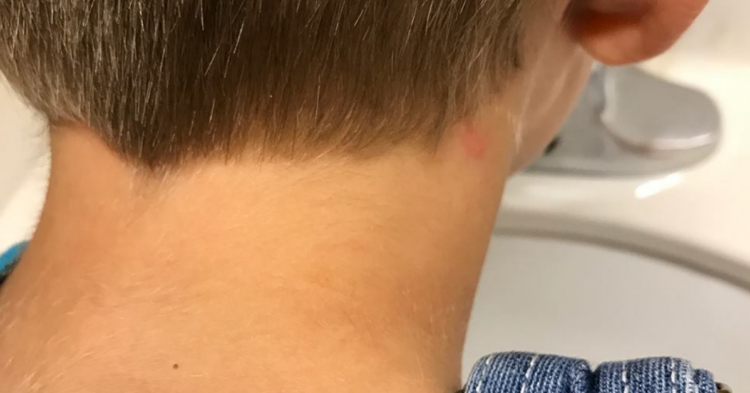Tick season is upon us, and it’s a little apocalyptic to be honest.
Going for an unsuspecting beautiful summer hike and having little creatures burrow into your skin and cause you harm sounds like the plot of an alien takeover movie.
Ticks aren’t just your run-of-the-mill bugs.

In most cases, insects look worse than they actually are. However, ticks can cause some serious damage if they aren’t removed correctly.
And even a vague description of what they do sounds unpleasant.

The bite-sized creatures latch onto skin and burrow their bodies beneath it to feed . No thanks.
There are a chilling variety of tick-spread diseases to watch out for.
The biggest to worry about is lyme disease , which currently has no cure. It can be spread to pets and humans—anything that has been bitten by a tick that hosts the disease.
It also helps to know that different kinds of ticks are known to spread different diseases.

As the CDC explained , for instance, the Lone Star tick located throughout the southern and midwestern United States can transmit the Heartland virus, Ehrlichiosis, and Southern tick-associated rash illness or STARI.
The blacklegged tick of the northeastern and upper midwestern U.S., however, is known to spread Babesiosis, Borrelia mayonii, Borrelia miyamotoi, Powassan disease , and the infamous Lyme disease.
Even though we hear it from our friends and family every year that we need to avoid tall grass and check ourselves and furry friends for the bugs, we still don’t.

We still skip through fields innocently as if we’re Julie Andrews from The Sound of Music.
If you think you’re taking special care, there’s still room for improvement.

This doesn’t mean you need to stay inside 24/7 and never see the light of day, but just to be a little more diligent than you normally might when hanging around out in the wilderness.
One mother is using photos of her son to spread awareness about the dangers of ticks.

Christal Turner’s young son was complaining of itching on his neck.
She originally assumed that he had a couple mosquito bites from playing outside.

But after examining him more closely, she made a shocking discovery .
There were seven ticks burrowed into his neck.

She wants people to understand how difficult it was for her to see the ticks, even when she was looking closely.
At first glance, they look like something so common on the human body.

“To the unsuspecting eye, they just appear as specks of dirt or freckles.”
It’s really hard to see the difference.
Usually when we think of ticks, we might picture them to be a little bit bigger.

Especially if you’ve pulled them off of you or your animal, you’ll know they can be pretty easy to spot.
Christal shared the photos in the hopes that she can help others.

Textbooks really don’t do these things justice. Showing the public what these bugs look like in real life in someone’s hairline will help them recognize ticks and potentially prevent the spread of lyme disease.
She expressed that her son wasn’t even in long grass, which is typically where we are told to stay away from.

Christal sure knows a lot about ticks. Thankfully, we all have her post as a reference.
The photos have been shared over 13,000 times.

Commenters haven’t just expressed their fear—they’re sharing personal stories as well.
“My husband had one and had to take meds to try to not get lime disease,” one person writes.
Many commenters are wondering how on earth Christal could see them.

Seriously. I keep looking back at the photo of the back of her son’s head and there is no way I would have been able to tell had he not complained.
Tick bites are more common than you would think.

“A couple years ago I got very sick and was hospitalized, had several deer ticks on me and you couldn’t even see them,” another person writes.
If you’re unsure if something is a tick or not, get it checked out.
Better safe than sorry, especially in this case. Happy tick hunting!

















































